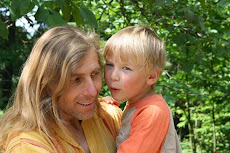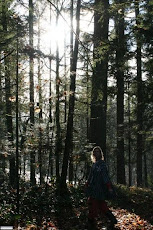A weekend in the coastal town of Galle, Sri Lanka, is a tourist paradise. Throughout the backpackers circuit in Africa and Europe, this place is legendary for beautiful topless Swedes enjoying low-priced alcohol and beautiful beaches. Endless variety of guest houses and restaurants catering to the evidently huge international crowd who come to enjoy this gem of coastline and culture. How to enjoy a weekend with no official work duties?
Work, of course. First of all, it's Bloody Hot season, meaning that Swedes are few and far between. If I really need to see topless Swedes I've got internet; work offers the chance to see more of the real Sri Lanka that could never be captured online. Last weekend, "real" took several forms.
First, a 40-minute drive down the coast with our amazing (and SAFE) driver Nishanka, national director Somasiri and local trainer Radeeka pointing out sites and history - free guided tour in an air-conditioned SUV. Every bit as stunning and varied as the California coast. Buildings new and restored after the tsunami, other ominous vacant lots and ruins a reminder of the devastation.

Stopped for breakfast at a beachside set of grass-thatched huts, but they were out of food. Next door was a very fancy hotel-type place completely empty except for a Sri Lankan breakfast buffet that looked suspiciously like the dinner buffet - white rice, red rice, dahl, curried chicken, potatoes in a white curry sauce. Luckily I'm loving the food here and, with one exception where I could only finish 1/4 of a plate, not finding it too spicy. I sometimes break a sweat or turn red and get tingly lips like everyone else, but that's just part of the dining experience.
Arrived at the home of Nelka, a 36-year-old mother of 5 (youngest daughter pictured here) who started a sewing business through the program I'm here to evaluate. We had the honour of sitting for 3 hours with this woman and her whole family learning intimate details about their finances, local business environment, the fishing industry (her husband drives a fishing boat and is gone for a month at a time - luckily was home today), upcoming wedding of her daughter, power balance between husband and wife, how much of her jewelry is currently in hawk at the pawn shop, and many more details of her life that usually take years of relationship-building to learn of our Canadian friends, if ever. Think about it - even though I'm pretty darn open about most things verbally and through my blog, how many of you know how much I earn, what my debt load is, how Sarah and I resolve conflict, or how my father died?

On the way back we detoured to a lighthouse that turned out to be the tallest in the country. The lighthouse keeper came out of his residence and talked for 20 minutes about his history as a lighthouse keeper (since 1981), what his retirement would be like, his previous postings (including one lighthouse at sea where he'd be there for 45 days at a time), how often he sees his family a few hours up the coast. Yet another deep glimpse into the real life of a real person, courtesy of the Canadian journalist travelling with us.
David is one of those special souls who is so genuinely interested in and respectful of people's stories that they naturally want to share. He gets away with deeply personal questions that most of us shy away from asking, not wanting to intrude. But with this journalist, everyone has a story worth sharing, and every detail is worth knowing. "How many lightbulbs, and what wattage?" "How many stairs to the top (243) and how often do you go up?" What a true gift, and sadly a rare one. I have many friends with truly open souls who make you feel safe to share - I'm married to one - but this unabashed forwardness that turns every random encounter into a connection is rare. He takes 10 minutes longer to leave any place than the rest of us - leaving the lighthouse he ended up befriending two of the very muscular workers renovating the outside of the lighthouse, then a woman selling boiled chickpeas, then...

Next stop - Sweat Shops. A tax-free Free Trade Zone - a high-security fenced compound that houses many different buildings where all our cheap clothing and products are made. Somasiri managed to talk them into letting us drive through, with one of their trucks "escorting" us. They even let me stop and take a few photos, then their guard got into our car so he could give us an animated guided tour, explaining what was made in each building, from airplane parts to undergarments. He showed us the bus stop where dozens of busses waited for the shift to end, the daycare for working parents, the cafeteria, the beautiful tropical tree-lined streets, the music blasting out of the garment factory. Every building had numerous fans and ventilation systems, looked very clean, no more crowded than a cubicle-filled Canadian office, lots of emergency doors. From the outside, it verified what my Sri Lankan friends and the guide had told me, that working conditions have improved greatly.
We stopped at a makeshift shelter outside one factory, where workers were handing out free juice and cookies for
Poson Poya. This gave us a chance to talk to some factory workers, who all looked genuinely happy, obviously healthy (and no, I don't believe they were hand-picked to be good PR faces, especially since tours are not part of what happens here) and adults. They laughed when I told them that I'd understood sweat shops to be dangerous, miserable, human-rights-abusing pits of despair (not sure how that got translated). They're still not paid a living wage (7am-5pm plus a mandatory Saturday "overtime day" for 18,000 Rupees - $150 - a month) and I still think it's immoral for these international companies to not pay taxes to help support the country they're in, but overall it seems to be much better than the Mexican maquilladores where activists are (or atleast were) beaten and child labourers are virtual slaves making our Levis jeans.

Quick drive through the backpackers/surfers paradise of Unawatuna Beach, then on to the historic Dutch Galle-Fort, an entire fortified city declared by UNESCO as a world heritage site. We walked the cobblestone streets lined tight with old houses, churches, shops and offices, and strolled the ramparts of walls built to repel British and Portugese colonialists from the sea and Sri Lankans from the land. What a microcosmic world they chose to live in, surrounded by fear and hate on all sides, just for the privilege of pillaging this rich beautiful land and people.
Back to the sprawling elegant and hauntingly empty (we are the only guests, outnumbered by the staff) beachfront hotel for a quick swim, then out to the opening night of a new Indian restaurant. Just-cool-enough breeze off the water, powerful music blasted by the DJ in the hut outside, kids enjoying the indoor playground of this family-friendly restaurant, and the best dahl and mango lassi of the trip. Nishanka drove us back to the hotel tired, well-fed, and one full day fuller of beautiful, real Sri Lanka.




















